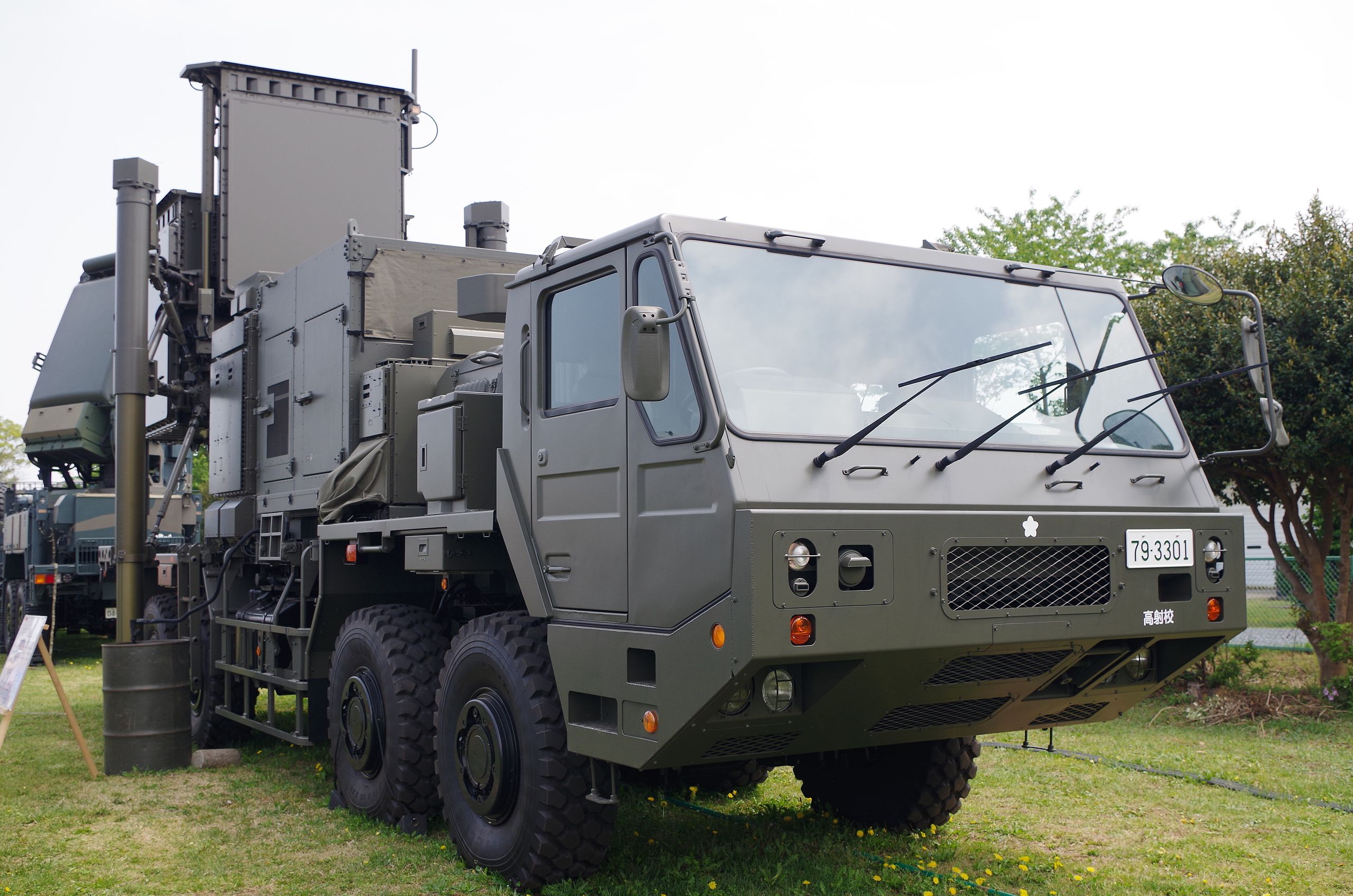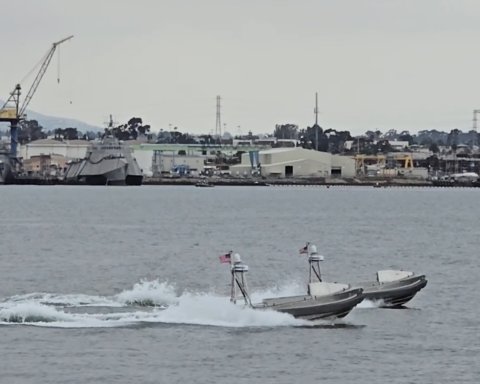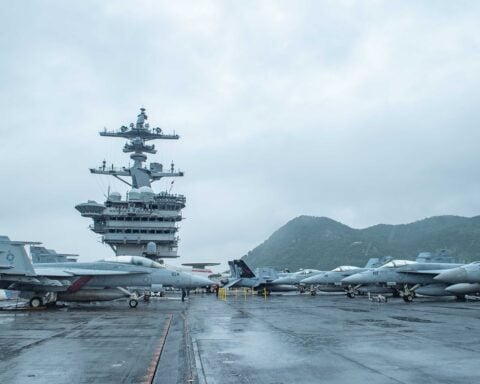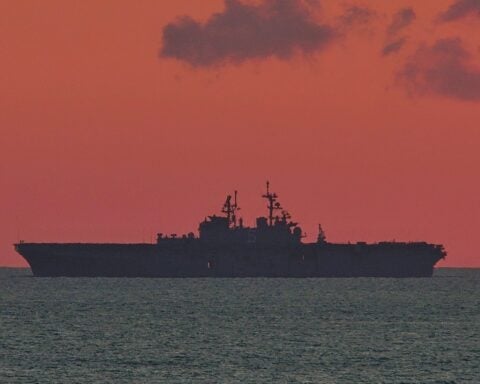
The Japan Self Defense Force has stationed a mobile radar system on Kita Daito Island in the Philippine Sea to expand Japan’s capabilities in the area. Meanwhile, the 31st Marine Expeditionary Unit held a live fire exercise on Wednesday and the Russian Navy Pacific Fleet wrapped up joint drills with the joint command of troops and forces in the north-east of the Russian Federation on Friday.
In a Friday press conference, Japan Defense Minister Minoru Kihara announced that the Ministry of Defense and JSDF on Thursday had told the Kita Daito Island Village its intention to deploy a Japan Air Self Defense Force mobile radar system on the island which is located 225 miles east of Okinawa.
Kihara said there was an urgent need for Japan to strengthen its surveillance and monitoring capabilities on the Pacific Ocean side of Japan (Japan does not use the term Philippine Sea, referring to it instead as the Pacific Ocean) due to neighboring countries expanding and intensifying their activities in the sea and airspace around Japan.
“Furthermore, we believe that by establishing such a continuous surveillance and monitoring infrastructure, Japan will demonstrate its will and ability to defend its territory, territorial waters, and airspace, as well as the lives and property of its citizens, which is also very important in deterring armed attacks against Japan,” Kihara. Said.
Kita Daito Island is an important location in ensuring continuous surveillance around Japan, given it lies on the Pacific side of the Miyako Strait located between Miyako Island and Okinawa, Kihara said. A timeframe to deployment has not yet been made but the MoD wants to deploy the radar as soon as possible following consultations with the residents of the island, he said.
Since taking office October 2021, the Kishida administration has bolstered the defense capabilities of Japan, particularly around the southwest islands, which include the Senkaku Islands held by Japan and claimed by China. Japan has initiated moves towards placing and increasing surveillance capabilities around the region along and beefing up its military capabilities there, amongst them including deploying anti-ship surface-to-surface missile systems and Patriot air defense and ballistic missile defence systems in the region.
However new military deployments and presence in Japan requires the MOD to inform and consult with the local authorities. In the case of Kita Daito Island, the residents have been clamoring for a Japanese military presence A opinion piece in 2021 asking for help guarding against a “certain” foreign power was put forward by the community, according to a report by Japanese newspaper Asahi Shimbun.
In the Philippine Sea on Wednesday, the 31st MEU sank a moving training target vessel during an expeditionary strike exercise according to a Marine Corps release on Thursday. An AH-1Z Viper attack helicopter, attached to Marine Medium Tiltrotor Squadron (VMM) 262 Reinforced, 31st MEU, fired a live AGM-179 Joint Air-to-Ground Missile (JAGM), striking a towed moving training vessel during a training mission at sea.
“The success of this expeditionary strike demonstrates the 31st MEU’s capability to deliver precision strikes at sea and safeguard a free and open Indo-Pacific,” reads the release.
Meanwhile Russian Navy and People’s Liberation Army Navy (PLAN) ships have been sailing near Japan over the week according to Joint Staff Office reports. On Wednesday, the JSO issued a report stating that at 6 p.m. on Tuesday, Russian Navy corvette RFS Sovershennyy (333) was sighted sailing west in an area 40km northeast of Cape Soya on the main island of Hokkaido. The Russian corvette then sailed west through La Perouse Strait, which separates Hokkaido from the Russian island of Sakhalin, to enter the Sea of Japan. Japan Maritime Self Defense Force fast attack craft JS Kumataka (PG-827) shadowed the Russian corvette, according to the release.
A second JSO release on Wednesday stated that at 1 a.m. that day, PLAN destroyer CNS Kaifeng (124) and frigate CNS Yantai (538) had been sighted sailing southeast in an area 50km southwest of the Kusagaki Islands. The two PLAN ships subsequently sailed east through the Osumi Strait, which lies between the Osumi Peninsula on the main island of Kyushu and Tanegashima Island, and entered the Pacific Ocean. Fast attack craft JS Shirataka (PG-829) and a JMSDF P-1 Maritime Patrol Aircraft (MPA) from Fleet Air Wing 4 based at Naval Air Facility Atsugi on the main island of Honshu shadowed the PLAN ships, stated the release.
On Friday, the JSO issued a release with the latest movements of Kaifeng and Yantai, stating that on Thursday at 2 p.m., the two PLAN ships had been sighted sailing northwest in an area 40km southeast of Cape Toi, Kyushu and subsequently sailed west through the Osumi Strait to enter the East China Sea. The JSO stated that fleet oiler JS Omi (AOE-426) and a JMSDF P-1 from Fleet Air Wing 1 based at JMSDF Kanoya Air Base on Kyushu conducted surveillance on the PLAN ships.
On Thursday the JSO issued a release stating at 1 a.m. that day PLAN cruiser CNS Lhasa (102) and fleet oiler CNS Kekexilihu (903) had been sighted sailing northeast in an area 60 km southwest of Tsushima and subsequently sailed northeast through the Tsushima Strait into the Sea of Japan. Multipurpose support ship JS Amakusa (AMS-4303) and a JMSDF P-1 MPA from Fleet Air Wing 4 shadowed the PLAN ships, according to the release.

On Friday, the Russian Navy Pacific Fleet wrapped up joint drills with the joint command of troops and forces in the north-east of the Russian Federation, “The Pacific Fleet completed the bilateral exercise of the grouping of forces, which took place between 18 and 28 June in the waters of the Pacific Ocean, the Japan and Okhotsk seas under the general guidance of Commander of the Pacific Fleet Admiral Viktor Liina.”, read a Russian Ministry of Defense release.
The release stated that during the course of operations at sea, the Russian Pacific Fleet’s forces have carried out more than 800 combat exercises, including 650 that have been carried out with the practical use of weapon systems. At various stages, anti-submarine actions, organisational movement at sea, launching joint missile strikes on mock enemy ships’ groups, combat training and training to repel attacks of UAVs and uncrewed boats were carried out. A total of 40 ships and small craft were involved in the drills along with wenty aircraft and helicopters of the Pacific Fleet Naval Aviation, including Tu-142MZ long-range anti-submarine aircraft, IL-38 and IL-38N aircraft and Ka-29 and Ka-27 helicopters. Marine units of the Russian Navy Pacific Fleet along with KH-35 and K-300P coastal defence missile units also took part in the drills.





